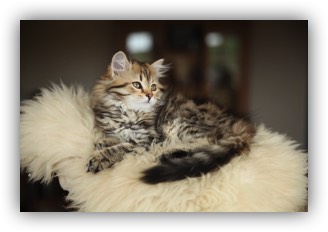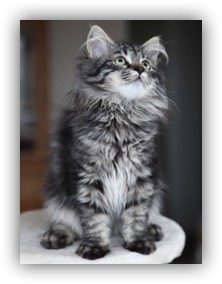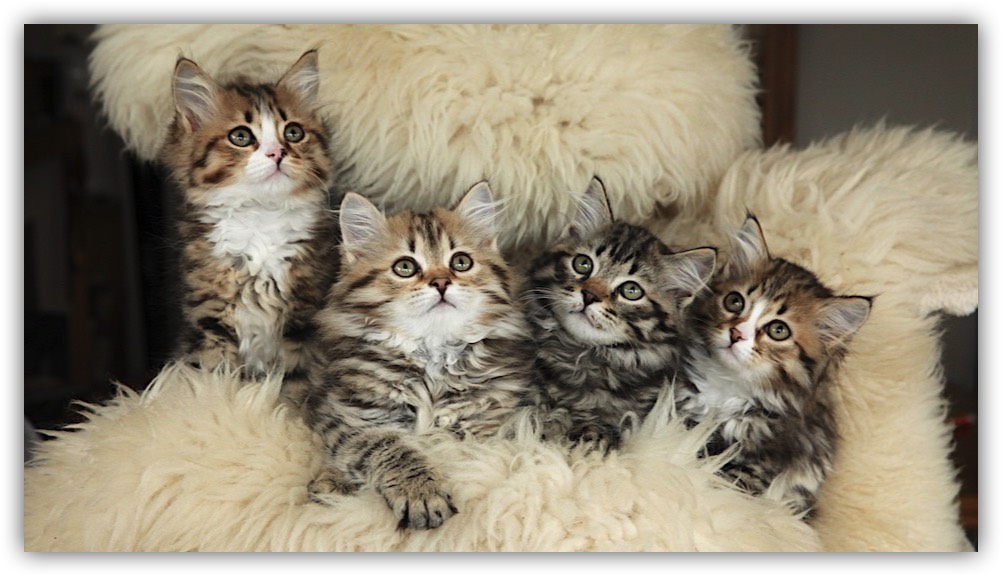Ergaki Cattery
Ergaki is an experienced Siberian Cattery located in East Sussex, England and our first Siberian joined us in 2012. Our cattery is registered with TICA (The International Cat Association) and follows in its practice the TICA’s Rules and Regulations. Ergaki is also registered with the British organisation GCCF.
Ergaki is a HMRC registered Cattery.
Ergaki is a HMRC registered Cattery.
We are a family of four and have two children in their teens. My educational and professional background is in psychology and I am also a certified Animal Assisted Therapist. I am a member of The Surrey and Sussex Cat Association and The Siberian Cat Club.

Our cats are primarily our beloved pets and members of our family. They are kept as pets within a busy home environment and brought up around other cats and our children. We prefer gentle, affectionate and non - dominant personalities and had chosen our cats with these criteria in mind. Our kittens are very well socialised as they are not kept in enclosures outdoors and they get a lot of love and attention from all four of us.
Siberians are generally healthy, hardy cats with few known health problems. We pay a lot of attention to the health of our cats. All our cats are examined by the vet on a regular basis, vaccinated, tested and free of HCM, FIV/FELV, PKD1/PK and parasites (including Trichomoniasis). Our cattery is free of diseases. We give a written health guarantee for all our kittens.

I am an ethical breeder and my focus is on quality and not on quantity, which is why we rarely have kittens available immediately. Siberian kittens are very popular and demand always exceeds supply, especially when it comes to registered and reputable catteries.
We do not sell for breeding in the United Kingdom. We do not offer a stud service with our male, this ensures his continuous good health and avoids unnecessary infections. Our best in Clean Genealogy kittens might be offered as breeding cats for registered and responsible traditional Siberian (not Neva Masquerade) breeders outside of the United Kingdom.
Why Siberians?
My grandfather as a child was sent out with his family from Poland to Siberia. It is unclear if this was due to political reasons or as a punishment, or of a way for the government to get hold of their country estate. He spent about 6 years in Irkutsk, Siberia and came back with idealised and fond memories of his time spent there, and often used to tell stories about this particular period in his childhood. He remembered having a beautiful, fluffy and clever silver cat and later in life he search for this breed or type but never found a similar one. When my youngest child was two I felt that it is a right time to get a cat and I started to research various breeds and then I came across Siberians. I thought that this might be the cat that my grandfather had when he used to live in Siberia, I also liked the look, their dog alike personality and their hypoallergenic attributes.
My grandfather as a child was sent out with his family from Poland to Siberia. It is unclear if this was due to political reasons or as a punishment, or of a way for the government to get hold of their country estate. He spent about 6 years in Irkutsk, Siberia and came back with idealised and fond memories of his time spent there, and often used to tell stories about this particular period in his childhood. He remembered having a beautiful, fluffy and clever silver cat and later in life he search for this breed or type but never found a similar one. When my youngest child was two I felt that it is a right time to get a cat and I started to research various breeds and then I came across Siberians. I thought that this might be the cat that my grandfather had when he used to live in Siberia, I also liked the look, their dog alike personality and their hypoallergenic attributes.

About Siberians
The Siberian, Russia’s native, aboriginal forest cat, first appeared in recorded history around the year 1000AD and has been documented in Russian fairy tales, literature and art. For centuries, these cats populated Russia, especially Siberia region and were often street or farm cats used for rodent control. At the end of the Cold War, in Russia, cat clubs became fashionable. It was not until 1987 that breeding records started being kept and the first Siberian breed standard was established in 1989. As some Russians felt that traditional Siberian cats are not sophisticated enough they started to mix Siberians with colour point cats (Siamese/Thai) and as a result Neva Masquerade variation developed. Due to constant mixing of Siberians with Neva Masquerade over the last 20 years the population of pure traditional Siberians that do not have any Neva in their entire genealogy decreased significantly and those cats are currently rare.
Even though the Siberian archetype (standard of breed) is well described and evidenced, there are currently frequent misconceptions even amongst cat judges about how Siberians should look. Siberians are strong cats, however, their weight very rarely exceeds 7 kg and normally they are between 4 and 6kg. The round head with a strong trapeze shaped muzzle, medium size, set wide apart ears and curvy profile line distinguishes Siberians from other forest breeds. The coat should be thick, semi – long and significantly shorter in summer than in winter. Excessively long coat in Siberians is normally a sign of a Persian cross breed beyond 5 generations. Traditional Siberians have green or yellow eyes, never blue. Blue eyes in Siberians are the indication of Neva or Altai cross breed – those genes that are foreign to traditional Siberians.
Siberian males are larger than females and often have a more visible mane. The breed is slow to mature, taking up to 3 years to reach full size. Both males and females can be equally affectionate and friendly.
Siberian Forest Cats combine independence and loyalty. Their personality is gentle and they are devoted to their owners, often greeting them at the door, in general they are very people-orientated. It is often said that they are more like dogs than cats, following people around and as they are good hunters they have been known to learn to play fetch. If they are well socialised they are perfect for families with children as they are very patient and playful . Siberians are affectionate cats with a very good dose of curiosity.
Siberian Forest Cats combine independence and loyalty. Their personality is gentle and they are devoted to their owners, often greeting them at the door, in general they are very people-orientated. It is often said that they are more like dogs than cats, following people around and as they are good hunters they have been known to learn to play fetch. If they are well socialised they are perfect for families with children as they are very patient and playful . Siberians are affectionate cats with a very good dose of curiosity.
"This cattery has NOT been inspected by and is not endorsed by The International Cat Association, Inc."